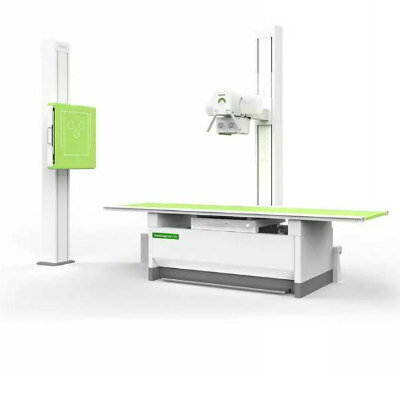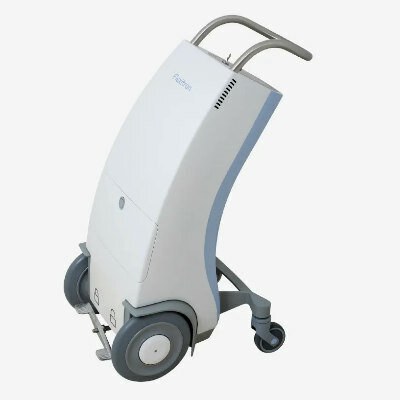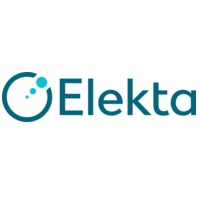First-of-its-Kind All-Digital PET/CT System Enhances Diagnosis and Drives Efficiency
|
By MedImaging International staff writers Posted on 18 Oct 2022 |

A first-of-its-kind all-digital PET/CT system features an innovative, breakthrough technology built from the ground up to harness the power of an advanced digital detector capable of producing high-resolution images and exceptional image quality with enhanced clinical efficiency. The new PET/CT platform accommodates patients across more care areas and offers a scalable design to easily enable future-ready capabilities and multi-dimensional scalability. The new system is designed with a new deep learning image processing software and the flexibility to scan beyond FDG with new, emerging tracers that can enable different procedures such as the diagnostics portion of theranostics imaging
GE Healthcare (Chicago, IL, USA) has launched Omni Legend, the first system on its all-new, all-digital PET/CT platform. This cutting-edge system features a brand-new category of digital BGO (dBGO) detector material with a small crystal size that delivers more than two times the sensitivity of prior digital scanners, enabling faster total scan times and impressive small lesion detectability. It is designed to improve operational efficiency, enhance the patient experience, and increase diagnostic power, ideally helping to enable improved patient outcomes. Additionally, the system’s theranostics capabilities and ability to image short life tracers, as well as dynamic protocols, help empower clinicians with greater clinical information across more oncology, cardiology, and neurology procedure types than ever before.
Omni Legend aims to help healthcare systems overcome today’s barriers with a collection of intuitive workflow solutions enhanced by artificial intelligence (AI), including its new Precision DLi solution for deep learning image processing in PET/CT as well as its AI-based Auto Positioning Camera. More than a new processing technique, Precision DLi is engineered using Deep Learning with a sophisticated deep neural network trained on thousands of images created with different reconstruction methods. It was designed to provide the image quality performance benefits most associated with hardware-based Time-of-Flight, such as better contrast-to-noise ratio, contrast recovery, and quantitative accuracy. The capabilities of Omni Legend are further elevated by the inclusion of Q.Clear (BSREM), GE’s pioneering PET image reconstruction technology, and MotionFree, the company’s device-less respiratory motion correction technology. Q.Clear helps to ensure reliable quantification, while MotionFree operates seamlessly in the background to correct respiratory motion artifacts for all patient types.
Furthermore, the new system’s operational efficiency solutions help improve the PET/CT imaging experience for both the technologist and the patient with convenient features that provide a fast data quality assurance process that saves time with streamlined calibration; simplified protocol selection on the gantry touchscreen and a new user interface to enable an easy PET/CT process from start to finish; and enhanced patient positioning capabilities as a result of AI-based Auto Positioning that automatically centers the patient for a completely hands-free positioning experience. This streamlined patient setup frees up technologists to focus on making patients feel more comfortable.
Omni Legend also features LED ambient lighting to encourage a calming mood as well as a graphic pattern for the patient to view in the system to help in both alleviating stress and reducing movement for nervous patients. Omni Legend was designed with theranostics in mind, enabling clinicians to reach new levels of sensitivity and detectability for incredibly clear images. Already, the system boasts the highest sensitivity per cm in the market and images Gallium 68 for diagnosis, staging, or restaging. Future-ready capabilities include a multi-directional, upgradable platform that can potentially expand in each of the core dimensions of PET/CT imaging, including axial field-of-view, digital detector technology, software, CT capabilities, and imaging of new tracers.
“We built our scalable Omni platform from the ground up to meet the needs of our customers and their patients today and in the future,” said Jean-Luc Procaccini, President & CEO, Molecular Imaging & Computed Tomography, GE Healthcare. “With the patient in mind, we leaned on our longstanding technological leadership and strong clinical collaborations to enhance the scan experience with entirely new components designed to help improve clinical outcomes. The result is an all-digital detector, a cutting-edge deep learning solution, and workflow enhancements to help enable more personalized care.”
Related Links:
GE Healthcare
Latest General/Advanced Imaging News
- New AI Method Captures Uncertainty in Medical Images
- CT Coronary Angiography Reduces Need for Invasive Tests to Diagnose Coronary Artery Disease
- Novel Blood Test Could Reduce Need for PET Imaging of Patients with Alzheimer’s
- CT-Based Deep Learning Algorithm Accurately Differentiates Benign From Malignant Vertebral Fractures
- Minimally Invasive Procedure Could Help Patients Avoid Thyroid Surgery
- Self-Driving Mobile C-Arm Reduces Imaging Time during Surgery
- AR Application Turns Medical Scans Into Holograms for Assistance in Surgical Planning
- Imaging Technology Provides Ground-Breaking New Approach for Diagnosing and Treating Bowel Cancer
- CT Coronary Calcium Scoring Predicts Heart Attacks and Strokes
- AI Model Detects 90% of Lymphatic Cancer Cases from PET and CT Images
- Breakthrough Technology Revolutionizes Breast Imaging
- State-Of-The-Art System Enhances Accuracy of Image-Guided Diagnostic and Interventional Procedures
- Catheter-Based Device with New Cardiovascular Imaging Approach Offers Unprecedented View of Dangerous Plaques
- AI Model Draws Maps to Accurately Identify Tumors and Diseases in Medical Images
- AI-Enabled CT System Provides More Accurate and Reliable Imaging Results
- Routine Chest CT Exams Can Identify Patients at Risk for Cardiovascular Disease
Channels
Radiography
view channel
Novel Breast Imaging System Proves As Effective As Mammography
Breast cancer remains the most frequently diagnosed cancer among women. It is projected that one in eight women will be diagnosed with breast cancer during her lifetime, and one in 42 women who turn 50... Read more
AI Assistance Improves Breast-Cancer Screening by Reducing False Positives
Radiologists typically detect one case of cancer for every 200 mammograms reviewed. However, these evaluations often result in false positives, leading to unnecessary patient recalls for additional testing,... Read moreMRI
view channel
PET/MRI Improves Diagnostic Accuracy for Prostate Cancer Patients
The Prostate Imaging Reporting and Data System (PI-RADS) is a five-point scale to assess potential prostate cancer in MR images. PI-RADS category 3 which offers an unclear suggestion of clinically significant... Read more
Next Generation MR-Guided Focused Ultrasound Ushers In Future of Incisionless Neurosurgery
Essential tremor, often called familial, idiopathic, or benign tremor, leads to uncontrollable shaking that significantly affects a person’s life. When traditional medications do not alleviate symptoms,... Read more
Two-Part MRI Scan Detects Prostate Cancer More Quickly without Compromising Diagnostic Quality
Prostate cancer ranks as the most prevalent cancer among men. Over the last decade, the introduction of MRI scans has significantly transformed the diagnosis process, marking the most substantial advancement... Read moreUltrasound
view channel
Deep Learning Advances Super-Resolution Ultrasound Imaging
Ultrasound localization microscopy (ULM) is an advanced imaging technique that offers high-resolution visualization of microvascular structures. It employs microbubbles, FDA-approved contrast agents, injected... Read more
Novel Ultrasound-Launched Targeted Nanoparticle Eliminates Biofilm and Bacterial Infection
Biofilms, formed by bacteria aggregating into dense communities for protection against harsh environmental conditions, are a significant contributor to various infectious diseases. Biofilms frequently... Read moreNuclear Medicine
view channel
New SPECT/CT Technique Could Change Imaging Practices and Increase Patient Access
The development of lead-212 (212Pb)-PSMA–based targeted alpha therapy (TAT) is garnering significant interest in treating patients with metastatic castration-resistant prostate cancer. The imaging of 212Pb,... Read moreNew Radiotheranostic System Detects and Treats Ovarian Cancer Noninvasively
Ovarian cancer is the most lethal gynecological cancer, with less than a 30% five-year survival rate for those diagnosed in late stages. Despite surgery and platinum-based chemotherapy being the standard... Read more
AI System Automatically and Reliably Detects Cardiac Amyloidosis Using Scintigraphy Imaging
Cardiac amyloidosis, a condition characterized by the buildup of abnormal protein deposits (amyloids) in the heart muscle, severely affects heart function and can lead to heart failure or death without... Read moreImaging IT
view channel
New Google Cloud Medical Imaging Suite Makes Imaging Healthcare Data More Accessible
Medical imaging is a critical tool used to diagnose patients, and there are billions of medical images scanned globally each year. Imaging data accounts for about 90% of all healthcare data1 and, until... Read more
Global AI in Medical Diagnostics Market to Be Driven by Demand for Image Recognition in Radiology
The global artificial intelligence (AI) in medical diagnostics market is expanding with early disease detection being one of its key applications and image recognition becoming a compelling consumer proposition... Read moreIndustry News
view channel
Bayer and Google Partner on New AI Product for Radiologists
Medical imaging data comprises around 90% of all healthcare data, and it is a highly complex and rich clinical data modality and serves as a vital tool for diagnosing patients. Each year, billions of medical... Read more





















